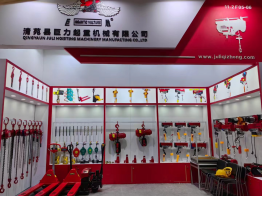


Understanding Anti-Fall Protection Importance, Types, and Best Practices
In various workplaces, especially those in construction, maintenance, and manufacturing industries, the risk of falls remains one of the leading causes of serious injuries and fatalities. This not only affects the safety of workers but also impacts productivity and company reputation. To mitigate these risks, anti-fall protection systems have been developed and implemented. This article will delve into the importance of anti-fall protection, the types available, and best practices for ensuring worker safety.
The Importance of Anti-Fall Protection
Falls from heights can have devastating consequences for workers, leading to severe injuries, including fractures, concussions, and even death. A tragic fact is that falls account for a significant percentage of workplace deaths annually. This highlights the need for effective anti-fall protection systems. Employers have a legal and ethical responsibility to provide a safe working environment. Implementing comprehensive fall protection measures not only safeguards employees but also reduces the potential for costly legal repercussions and insurance claims.
Furthermore, investing in anti-fall protection contributes to a positive workplace culture. When employees feel safe, they are more productive and engaged. Companies that prioritize safety tend to attract and retain talent more effectively, as prospective workers are increasingly considering workplace safety in their employment decisions.
Types of Anti-Fall Protection Systems
There are several types of anti-fall protection systems, each designed to address specific work conditions and scenarios.
1. Personal Fall Arrest Systems (PFAS) These systems include safety harnesses, lanyards, and anchors to catch workers if they fall. PFAS must be properly fitted and maintained, ensuring they function effectively if needed.
2. Guardrails These are often used on roofs, scaffolds, and elevated platforms. Guardrails are physical barriers that prevent falls from edges. The installation of guardrails should comply with local regulations to ensure their efficacy and safety.
3. Safety Nets Installed below elevated work areas, safety nets are designed to catch workers who fall. They must be regularly inspected and maintained to ensure they do not fail during a fall.
4. Scaffolding Safety Measures When scaffolding is necessary for work at heights, workers should be provided with appropriate safety measures such as guardrails, harnesses, and training on how to use scaffolding safely.

5. Loading Dock Safety Systems In environments where workers operate near loading docks, guardrails and safety gates are vital. These systems can help prevent falls when loading and unloading materials.
Best Practices for Implementing Anti-Fall Protection
Implementing anti-fall protection is not just about choosing the right equipment but also about ensuring that workers are trained and aware of the risks involved. Here are some best practices for effectively using anti-fall protection
1. Training and Education Workers should receive comprehensive training on fall hazards and the proper use of anti-fall equipment. This training should be ongoing and updated regularly to keep up with any changes in procedures or equipment.
2. Regular Inspections All anti-fall protection systems should be regularly inspected to ensure they are in good working condition. This includes checking for wear and tear on harnesses and lanyards, as well as ensuring guardrails and nets are securely installed.
3. Clear Safety Protocols Establish and communicate clear safety protocols that outline the steps to take in various scenarios. Ensure that workers know the procedures and that there are designated safety personnel on site.
4. Encourage Reporting Foster an environment where employees feel comfortable reporting safety concerns or hazards without fear of retaliation. This open communication can help identify potential fall risks that may not have been considered.
5. Emergency Preparedness Ensure that emergency procedures are in place for addressing falls or accidents. This includes having first aid kits readily available and ensuring that workers know how to seek help quickly.
Conclusion
Anti-fall protection is a critical component of workplace safety, especially in industries where working at heights is common. By understanding the importance of these systems, the various types available, and the best practices for their implementation, employers can significantly reduce the risks associated with falls. Ultimately, prioritizing anti-fall protection not only protects employees but promotes a culture of safety that benefits everyone in the workplace.



